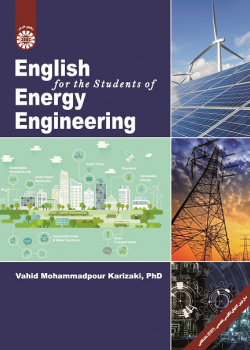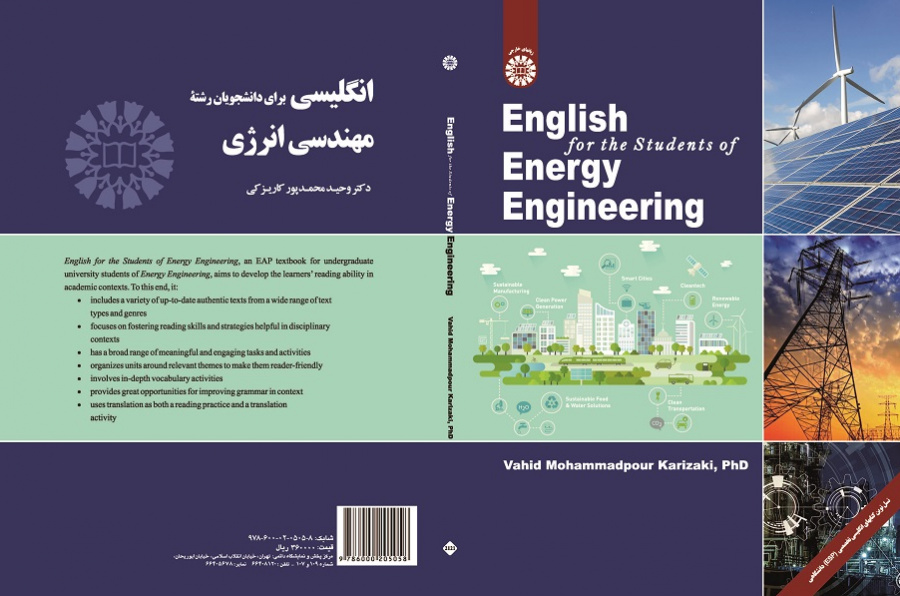

English for the Students of Energy Engineering
English for the Students of Energy Engineering, an EAP textbook for undergraduate university students of Energy Engineering aims to develop the learners’ reading ability in academic contexts. To this end, it:
• includes a variety of up-to-date authentic texts from a wide range of text types and genres
• focuses on fostering reading skills and strategies helpful in disciplinary contexts
• has a broad range of meaningful and engaging tasks and activities
• organizes units around themes to make them reader-friendly
• involves in-depth vocabulary activities
• provides great opportunities for improving grammar in context
• uses translation as both a reading practice and a translation activity
Schematic Chart
Introduction
Unit 1: Energy Sources
Reading 1: An Introduction to Energy Sources
Reading 2: Energy Sources in the Earth
Unit 2: Renewable Energy Resources
Reading 1: Fundamentals of Renewable Energy
Reading 2: Types of Renewable Energy
Unit 3: Hydrogen and Fuel Cell
Reading 1: Operations and Types of Fuel Cells
Reading 2: A Review of Production and Storage of Hydrogen
Unit 4: Nuclear Energy
Reading 1: Nuclear Energy
Reading 2: Nuclear Energy Application
Unit 5: Biomass Energy
Reading 1: Conversion of Biomass Energy and Its Benefits
Reading 2: Bioconversion of Food Waste to Energy
Unit 6: Solar Energy
Reading 1: Solar Energy Resource and Utilization
Reading 2: Solar Buildings
Unit 7: Wind Energy
Reading 1: Wind Energy
Reading 2: Wind Turbines
Unit 8: Hydro Energy
Reading 1: Hydro Energy and Hydropower Plants
Reading 2: Wave Energy
Unit 9: Geothermal Energy
Reading 1: Technical Aspects of Geothermal Energy and Its Sustainability
Reading 2: Geothermal Energy Resources and Development in Iran
Unit 10: Electrical Energy Systems
Reading 1: The Components of Electrical Energy Systems
Reading 2: Energy Storage of Renewable Resources
Unit 11: Energy and Economy
Reading 1: Economy of Energy
Reading 2: Energy-Based Economic Development
Unit 12: Energy and the Environment
Reading 1: Energy and Protecting the Environment
Reading 2: Oil Spill and the Environment
Unit 13: Energy Conversion and Efficiency
Reading 1: Energy Conversion Pathways and Policies
Reading 2: Conversion of Energies into Electricity
Unit 14: Energy Audit
Reading 1: Types of Energy Audit
Reading 2: Auditing Energy Use in Cities
References





